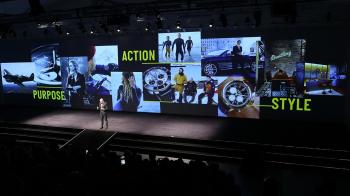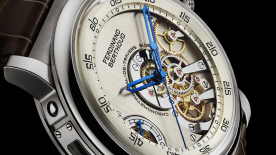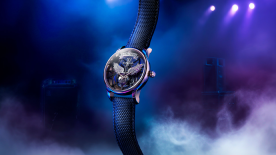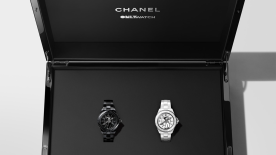Why have you decided to leave Baselworld in 2020?
As I have explained, we are very receptive to the actions undertaken by the new team and management of Baselworld, and their desire to imbue the fair with a renewed sense of dynamism. The overriding reason why Breitling will not be present at Baselworld in 2020 has to do with the timing, which doesn’t meet our needs. We launch our new products in January, so the timetable of Baselworld, although it now aligns with the SIHH, falls too late in the year.

As far as the format is concerned, we have put in place what we call “Summits”, major presentations held all around the world, with hundreds of people. Our ultimate aim is to introduce them to the Breitling experience. This is the format we will be taking forward.
In due course, we will make a decision as to whether or not to return to Basel for 2021.
The booth might not be necessary, perhaps, but what about the human dimension?
Yes, of course, that’s what we’re talking about: the human dimension, proximity and connections. Our Summits go to the heart of this human dimension. We might consider holding our European Summit in Basel, while keeping the other conferences elsewhere in the world, to stay close to people. Not all journalists travel to Basel, and the fact that we travel to their country also makes them feel that we’re interested in them, that we’re taking time for them, to be with them.
But you must admit that, for the 2019 fair, the big winner in terms of visibility, out of all the exhibitors, was Breitling!
Yes indeed, our booth was perfectly positioned, centrally at the back of the Halle. We enjoyed excellent visibility from the moment visitors arrived at the fair.
Breitling’s visibility has also increased outside the fair.
Yes, it’s true that Breitling is enjoying incredible popularity. We have products that are in line with our identity, our values and our territories: Air, Land, Sea. The enthusiasm is palpable on social media. Our collaborations with Norton and Bentley, and our squad member Bertrand Piccard, with his Orbiter 3 mission, create an authentic story that works very well. Our limited editions referencing the history of civil aviation, and even the new Superocean, speak to different types of client while remaining in the Breitling spirit. Everything makes sense, everything has a connection, from our boutiques to the lounge atmosphere, our partnerships, our squads, and our watches. You can feel and experience what Breitling is.
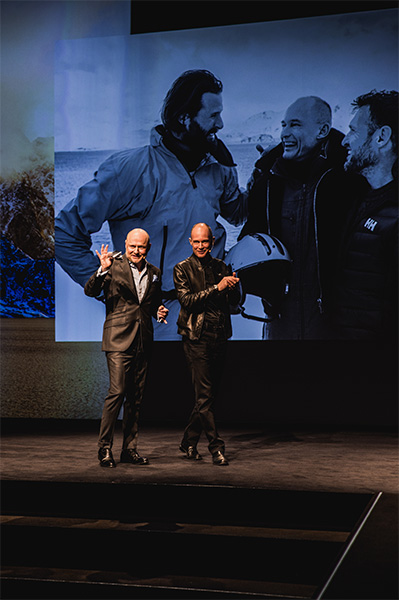
But is this clear, straightforward formula capable of adapting quickly, if the company philosophy should change over time?
I think the framework is fixed, and our universe and elements are too. But there still has to be some flexibility and adaptability.
Our first element is Air/Land/Sea. We are reinvesting in areas where Breitling has always had a presence, such as our 1960s ads, which today are being redesigned with the same products, almost 60 years later.
The second is our relaxed approach. It’s less formal, a little more rebellious, and that comes out in our partnerships with, for example, Kelly Slater, with surfing, and with motorbikes. They convey that youthful spirit.

The third is retro-modern. Our focus is on vintage that’s not old-fashioned or dated, that respects the aesthetics of the piece while bringing it up to date. It’s quite simple. We’re having a lot of success with these pieces. We have also just launched a new concept, the Capsule Collection, which enables us to tell stories with Pan Am, Swissair and TWA. These instant collections tell one of the stories in the Breitling adventure. They are also a way of making sure we don’t overload retailers with pieces that are part of the long-term collection.
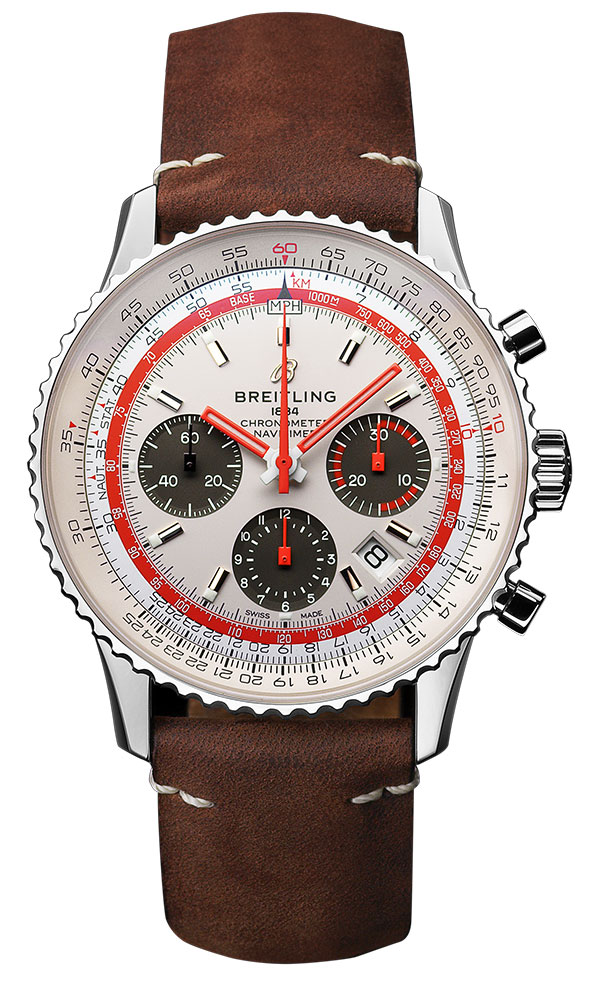
What can you tell us about the next Capsule Collection?
This autumn’s capsule collection will be completely different. We have so many different themes and stories to tell that the possibilities are practically infinite. We also have the good fortune to work with the world’s most prolific Breitling collector, who guides us and helps us a great deal with these choices. His eclectic taste and the breadth of his collection are a continual source of inspiration.
Does he work for Breitling?
No, Fred Mandelbaum is an entrepreneur who collects watches, around 80% of which are Breitling. He also helped us with the reissue of the Navitimer 806. We need specialists if we are to rediscover the community of collectors that we lost. Everyone who loved the models from the 1940s, 50s and 60s – we lost them. We’re now starting to win them back, and the feedback we’re getting is incredible.
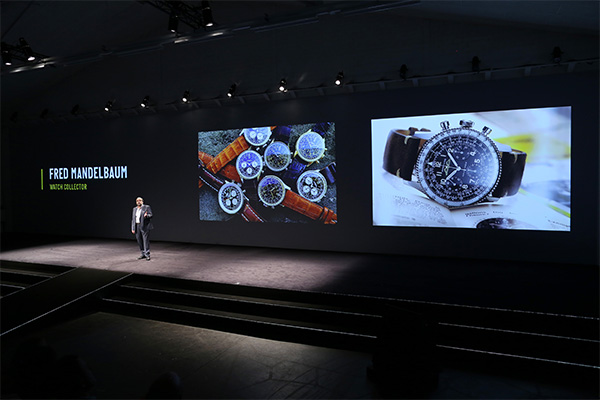
Why did you lose them?
Because Breitling is not just about aviation and XXL watches. An entire chunk of Breitling’s history – from the turn of the last century right up to the 1990s – was left dormant. We lost people because they had different dreams. Historically, we have this richness, this wealth and diversity that is the stuff of dreams. When we look at our history, our archives, the designs are superb.
Are you planning to take control of Breitling’s second-hand market?
It’s more complex than that. There are three completely different second-hand markets. And with today’s digital technology, the pre-owned market has become completely transparent.
First, there is the parallel market fed by retailers who have accumulated stocks of unsold pieces. In order for the network to remain healthy we have to take back this stock, these unsold pieces, the “out of collection” watches. This is particularly important given the transformation that Breitling is currently undergoing.
Then there is certified pre-owned, which is a completely different category. This category represents people looking to either sell their watch, or trade it in for a different model. Here too, it has to be handled properly through partners who can certify the products. If they’re not certified, the buyer has no guarantees in terms of the authenticity of the piece. The idea is that Breitling can provide one-year guarantees on platforms that sell these kinds of watches, like Mercedes does.
When will you take these initiatives?
We already have!
Do you buy back unsold stock?
Yes, of course!
What about your website?
We don’t do sales directly from our website. We work with physical stores and specialised websites. That’s not our role. Our job is to imagine, create and make watches. But we do support them. The American market is way ahead of the European market.
Has your publicised strategy of working with retail partners borne fruit? Do retailers feel confident enough to say, “Yes, we’ll stay with Breitling”? Has it opened any doors for you?
Our strategy is in line with the way we see the market. It’s about building relationships with our retailers over the long term. Overall, the quality of our retail network is very good. Indeed, 80% of our boutiques are managed by retailers.
Is there concrete demand? Are you being approached by other retailers?
Yes, because they’re watching what’s going on. They see what we’re doing and they like it. So that obviously attracts attention.
You said previously that your market was driven by Asia, with a 50% share, and women’s watches with 60%. Is that still the case?
Those figures still apply, yes. We are planning to strengthen the women’s watch segment. At the end of the 1990s Breitling was very strong in this area. That’s what we intend to do next year. We’re working on it, looking for a differentiating design. That’s the challenge.
How do you explain the success of vintage, or retro modern? Do you think it’s gaining a kind of staying power in the watch world? Is it plugging into the optimism of the post-WWII period?
It’s a social phenomenon. I think people are fed up of digital. They want to go back to things they understand. That’s why, for example, we created the association with Norton motorbikes. There’s also a connection with the history of Pan Am, and the film “Catch Me If You Can” with Leonardo DiCaprio. It’s about the possibility we used to see in the past, of a dream becoming reality. Retro-modern can be explained as a kind of balance between the past and the future, the cult of beautiful things that generate all kinds of emotions, anchored in a time not so very long ago, juxtaposed with the headlong rush for innovation, hi-tech and digital. It’s all about balance. That’s when you create something that feels right.

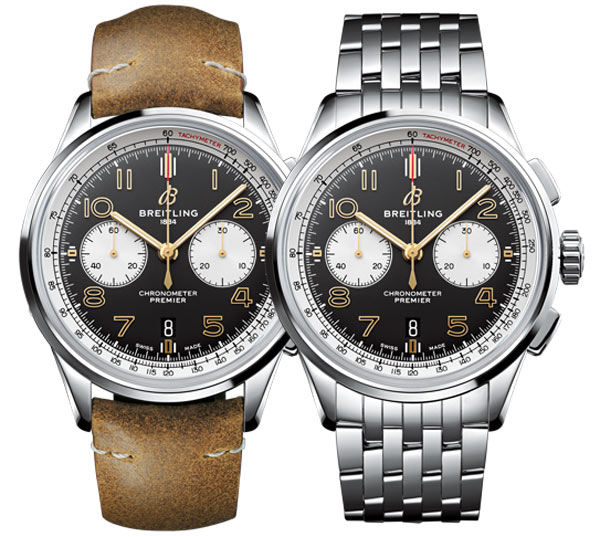
Does this also apply to Asia? It seems to be a very Western concept.
What is the norm these days? The Japanese market is very different from the Chinese market, which is very different from the South-East Asian market.
Change is happening everywhere. In China, millennials no longer want to buy the watches their parents bought – three hands, extra-thin, very classic. Because of globalisation, social networks and the media, they are plugged into global trends, and they adapt very quickly The market is becoming global, and concepts and loyalties know no borders.
So we won’t be seeing a women’s collection featuring very small watches intended for Asia?
Watch size is a different issue – that’s a matter of ergonomics. What’s important is the brand message. People buy the brand. They enter into the spirit of the brand and join a community: the world of explorers, the surfer lifestyle, etc. And at that point, they choose a product, not the other way around. People don’t identify with a brand because of the size of the watch. Community first, then product.
It takes a lot of energy to sell watches these days, wouldn’t you agree?
Yes, of course. The driver of any project is the passion and the energy you put into it.
The cool, laid-back image associated with surfing, and what we know as “lifestyle”, probably appeals more to young people.
Yes, and to anyone who is young at heart!
So which watch is aimed at young people?
Perhaps a “retro modern” Navitimer 806, or a colourful Superocean.
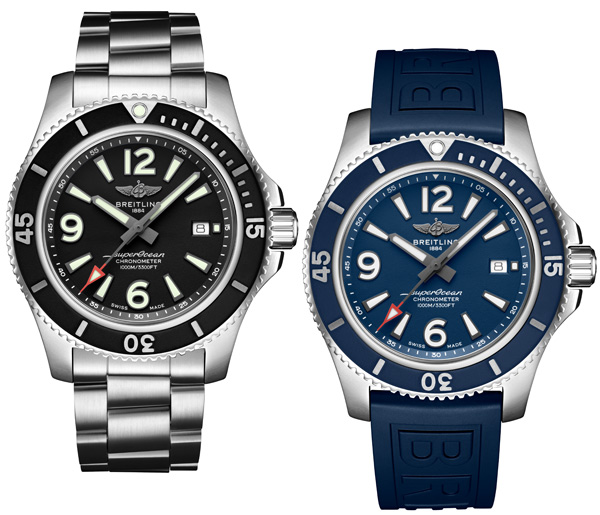
The perception of what makes a watch “cool” has nothing to do with age, or which time period the product represents. It’s all about how it is perceived, through its history, its story, its communication. For example, Norton’s first motorbike dates back to 1902. Today, people are inspired by Norton’s neo-retro models. It’s a product that has a history, it’s anchored. There are models from the past, and modern bikes. It has values, and a community has formed around that.
In terms of watchmaking, does an autonomous, independent watchmaker have the same opportunities for development as a big group? The groups have financial security and considerable clout.
Our greatest asset is our speed, and I believe Breitling has already shown that we can be much more responsive and effective as an independent brand, particularly when we have investors who believe in what we’re doing.
